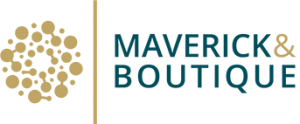All leaders, from the executive down to the team level, should view themselves as stewards of their organization’s most valuable resource: their people. As the person in the lead, others will be looking at how you set the tone and pace of the organization.
In too many organizations today, extra hours and days worked are seen as badges of honor. We often get dragged into competition with colleagues over who stayed the latest or showed up on the weekend. Mobile and remote technology can add fuel to the competition as emails zing back and forth long after most have officially ended their workday. All of this supposedly signals who is most dedicated or should be promoted within the organization.
We all want to be passionate about our work and feel valued within our organizations. Sometimes this does mean contributing extra hours for a special event, new initiative, or emergency situation but the grinding 24/7 “always-on” work culture cannot be sustained, not without diminishing returns for the organization as a whole. And it’s not just our place of work that suffers but also our health, our families, and our communities.
Few people alive today have as impressive of a resume as Robert M. Gates. His multidecade career in public service took him to the top of the Central Intelligence Agency and Department of Defense. In addition, he also served as president of Texas A&M University, national president of the Boy Scouts of America, and on numerous corporate boards… to keep it brief.
In Gates’ book A Passion for Leadership, he discusses a practice he established for himself and others as both Director of the Central Intelligence Agency (CIA) and Secretary of the Department of Defense. These cabinet-level positions were demanding and answerable directly to the President. Gates explained that, absent a meeting at the White House or national crisis, he would try to leave the office by 6:00 P.M. every night. Quite often, as head of these expansive agencies, he would have additional work to finish at home. However, by leaving the office he signaled to staff that it was okay for them to leave as well, to spend much needed time with families and to rest. He knew that as long as he stayed in his office, others would too and work late into the night. Over time, this would lead to worn out staff making “bad decisions and giving bad advice.”
For these same reasons, Gates said he always used vacation time: three weeks in August as CIA director, two weeks in the summer and one at Christmas as defense secretary, and four weeks as president of Texas A&M. As Gates said about his time-off:
“I always returned from vacation with a yellow tablet full of ideas and initiatives for further change and reform.” It’s about recharging so we can use our creative energy and talents most effectively.”
Mobile technology and remote working options have created new challenges for escaping this “always-on” frenzied work culture. Perhaps the biggest challenge is the bleeding between work and home life. How many of us still respond to phone calls, text messages, and emails after leaving the office or “logging off” for the day? How many of us go to bed and wake up checking work messages? Has your weekend ever started off on the wrong foot because a colleague fired off a heated email at 7:00 PM on a Friday night? Ever take a quick “peak” at your work email or “check-in” from a family vacation? Our modern working lives do not have to be like this!
While there is no “one-size-fits-all” approach to setting boundaries and expectations in the workplace, as a leader you set the tone and pace for your organization. Make sure your expectations are clear to everyone and lead by example.
In the spirit of Gates’ 6:00 PM Rule, below are a few ideas to consider when setting expectations and guidelines for use of mobile technology and remote working within your organization:
- Avoid checking work communications outside of set hours
- Turn-off work devices at home
- Uninstall work email apps over long weekends and vacations
- Ask: do I really need work email and related apps installed on my personal phone?
- Be mindful of colleagues’ personal time by not sending message outside of set hours. This can create a ripple effect and breed unhealthy competition where everyone is engaging in work at all hours
- If working later than other members of team, use your DRAFT folder and schedule send times for the next business day
- If “on-call” or working to meet deadline, the team should set a clear start and end time/date
- Set clear expectations for what needs to happen in these special circumstances
- Use leave time immediately following any extra demanding periods
Most importantly, as leaders, be the champions of cultural change in your organization. Set the example. Go home, unplug, and rest up. Then encourage others to join you so we can all give 100% when it matters most.
This article is the part of a series on how to most effectively manage our time and attention for the work that matters most. Subsequent articles will continue to look at technology and how we interact together in organizations. Check back later for more!


